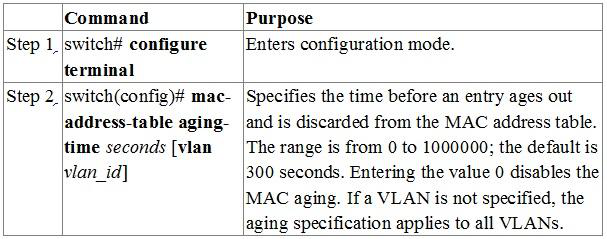
- #Cisco mac address table saved after power loss software#
- #Cisco mac address table saved after power loss series#
If the LED is blinking amber, the internal power supply in the switch has failed, and the RPS is providing power. If the LED is amber, the RPS is in standby mode or in a fault condition. If the LED is blinking green, the RPS is connected but is unavailable because it is providing power to another device. If the LED is green, the RPS is connected and ready to provide backup power. If the LED is off, the RPS is off or not properly connected. If the LED is amber, the system is receiving power but is not functioning properly. If the LED is green, the system is operating normally. If the LED is off, it means the system is not powered. Shows whether the system is receiving power and is functioning properly. Table 2-1 contains the purpose of the Cisco 2960 switch LED indicators, and the meaning of their colors. Use the show bootvar command ( show boot in older IOS versions) to see the current IOS boot file version. In Figure 2-1, the BOOT environment variable is set using the boot system global configuration mode command. The IOS operating system then initializes the interfaces using the Cisco IOS commands found in the configuration file, startup configuration, which is stored in NVRAM.

#Cisco mac address table saved after power loss series#
On Catalyst 2960 Series switches, the image file is normally contained in a directory that has the same name as the image file (excluding the. In a depth-first search of a directory, each encountered subdirectory is completely searched before continuing the search in the original directory. If this variable is not set, the switch attempts to load and execute the first executable file it can by performing a recursive, depth-first search throughout the flash file system. The boot loader finds the Cisco IOS image on the switch using the following process: The switch attempts to automatically boot by using information in the BOOT environment variable.
#Cisco mac address table saved after power loss software#
Finally, the boot loader locates and loads a default IOS operating system software image into memory and hands control of the switch over to the IOS. The boot loader initializes the flash file system on the system board. It initializes the CPU registers that control where physical memory is mapped, the quantity of memory, and memory speed. The boot loader performs low-level CPU initialization. The boot loader is a small program stored in ROM and is run immediately after POST successfully completes.

Next, the switch loads the boot loader software. It tests the CPU, DRAM, and the portion of the flash device that makes up the flash file system. First, the switch loads a power-on self-test (POST) program stored in ROM.


 0 kommentar(er)
0 kommentar(er)
